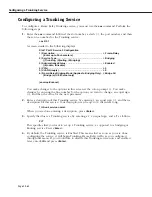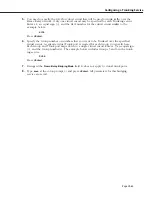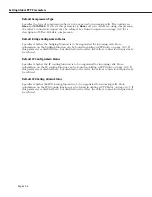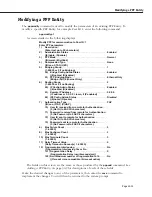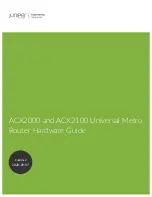
Page 30-4
On the receiving side, as low priority frames are being received they will be put into the
MLPPP reassembly queue, as supported by the existing software. As complete frames are
received they will be forwarded to the normal PPP processing. When high priority frames are
received, since they will always be sent complete, they will immediately be forwarded to the
normal PPP processing.
The only configurable parameter that has been added is the maximum delay. The feature is
enabled when this parameter is set to a non-zero value. A flag has been utilized to force a 16
fragment maximum for a fragmented frame to make this process compatible with Cisco
products.
The following diagram illustrates this concept:
PPP Fragmentation Process
Overview of PPP Configuration Procedures
The configuration of a PPP connection on your switch is divided into three separate tasks.
This three-phase strategy was chosen to allow PPP connections to be configured over
any
serial channel interface without requiring the use of multiple PPP configuration displays for
each separate type of interface.
Step 1. Configure the Physical Interface to be Used for PPP
The information configured at the physical interface level includes the specification of the
type of WSX interface and of any information that is specific to the given type of interface.
The interfaces that can support PPP are ISDN, T1/E1, and the Universal Serial Port on all WSX
boards.
An ISDN interface (WSX-BRI) requires the specification of the switch type, the local telephone
number, and the Service Profile Identifiers (SPIDs) if appropriate for the switch type. The UI
commands used to configure ISDN interfaces allow for modifying and viewing ISDN port’s
configuration and the display of its operational status. See Chapter 32 titled “Managing ISDN
Ports” for detailed information on configuring an ISDN interface for PPP.
Higher Priority Frame
Lower Priority Frame
Higher Priority Frame
Lower Priority Fragment
Lower Priority Fragment
Before Transmission
After Transmission
Queue
Queue
Summary of Contents for Omni Switch/Router
Page 1: ...Part No 060166 10 Rev C March 2005 Omni Switch Router User Manual Release 4 5 www alcatel com ...
Page 4: ...page iv ...
Page 110: ...WAN Modules Page 3 40 ...
Page 156: ...UI Table Filtering Using Search and Filter Commands Page 4 46 ...
Page 164: ...Using ZMODEM Page 5 8 ...
Page 186: ...Displaying and Setting the Swap State Page 6 22 ...
Page 202: ...Creating a New File System Page 7 16 ...
Page 270: ...Displaying Secure Access Entries in the MPM Log Page 10 14 ...
Page 430: ...OmniChannel Page 15 16 ...
Page 496: ...Configuring Source Route to Transparent Bridging Page 17 48 ...
Page 542: ...Dissimilar LAN Switching Capabilities Page 18 46 ...
Page 646: ...Application Example DHCP Policies Page 20 30 ...
Page 660: ...GMAP Page 21 14 ...
Page 710: ...Viewing the Virtual Interface of Multicast VLANs Page 23 16 ...
Page 722: ...Application Example 5 Page 24 12 ...
Page 788: ...Viewing UDP Relay Statistics Page 26 24 ...
Page 872: ...The WAN Port Software Menu Page 28 46 ...
Page 960: ...Deleting a PPP Entity Page 30 22 ...
Page 978: ...Displaying Link Status Page 31 18 ...
Page 988: ...Displaying ISDN Configuration Entry Status Page 32 10 ...
Page 1024: ...Backup Services Commands Page 34 14 ...
Page 1062: ...Diagnostic Test Cable Schematics Page 36 24 ...
Page 1072: ...Configuring a Switch with an MPX Page A 10 ...
Page 1086: ...Page B 14 ...
Page 1100: ...Page I 14 Index ...







